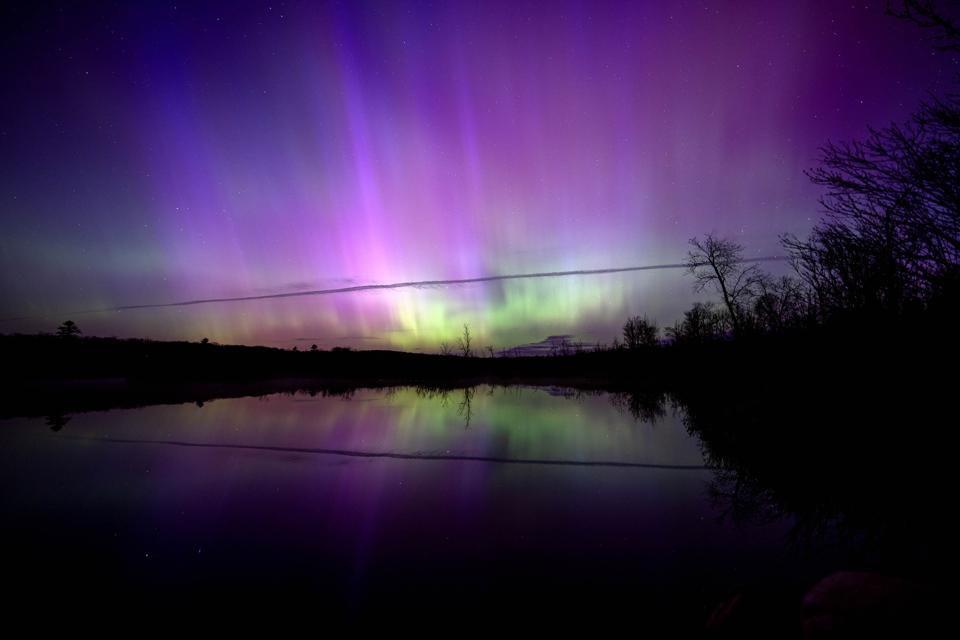Stargazers in 15 northern U.S. states and Canada may see a display of the Northern Lights in the early hours of Wednesday, May 28, 2025, according to the latest space weather forecast from the National Oceanic and Atmospheric Administration.
It comes after scientists detected an X1.1 class solar flare on the sun on May 25, which caused a shortwave radio blackout over the Pacific Ocean, according to Spaceweather.com. It was followed the same day by two lesser M3.4 and M8.9 solar flares.
When To See The Northern Lights
A G1-rated geomagnetic storm is predicted to commence between 0600 and 1200 UTC (1:00 and 9:00 a.m. EDT) on Wednesday, May 28. According to NOAA, “Unsettled to G1 (Minor) storming is likely on 28 May followed by unsettled to active conditions on 29 May.”
The potential displays of aurora borealis tonight have a predicted Kp index of 5, which provides a rough guide to their intensity. According to NOAA, that means “the aurora will move further from the poles, it will become brighter, and there will be more auroral activity (motion and formations). If you are in the right place, these aurora can be quite pleasing to look at.”
Where To See The Northern Lights
If a geomagnetic storm does result, it’s possible that the aurora borealis may be visible overnight in northern-tier U.S. states.
According to NOAA’s aurora viewline, this G1 storm may be seen in northern skies from Washington, northern Oregon, Idaho, northern Wyoming, Montana, North Dakota, South Dakota, Minnesota, Wisconsin, Iowa, Michigan, New York, Vermont, New Hampshire and Maine. Regions closest to the border with Canada will have the highest possibility of seeing the aurora.
Observers will need clear skies and check NOAA’s 30-minute forecast for the latest updates. With a new moon on Tuesday, May 27, there will be no interference from moonlight, making the skies as dark as possible in the early hours during astronomical darkness.
Why A Geomagnetic Storm Is Brewing
The geomagnetic storm is the result of “negative polarity CH HSS,” which refers to the orientation of the magnetic field and the fact that the solar wind is coming at high speed (HSS) from a coronal hole (CH) — a cooler, darker region in the sun’s corona, which can be seen in the image above. This coronal hole has been facing Earth all week, and allows the solar wind to escape more easily into space. Negative polarity means the magnetic field lines in the solar wind point toward the sun. If the magnetic field in the solar wind points southward, a geomagnetic storm may be triggered — resulting in auroras at mid to high latitudes.
The current solar maximum period is making coronal holes more common. The sun has an 11-year solar cycle, during which its magnetic activity waxes and wanes. According to NASA and NOAA, the sun entered solar maximum in October 2024. That came in the wake of a G5 geomagnetic storm on May 10-11, 2024, the most intense since 2004 and possibly for hundreds of years.
Wishing you clear skies and wide eyes.

